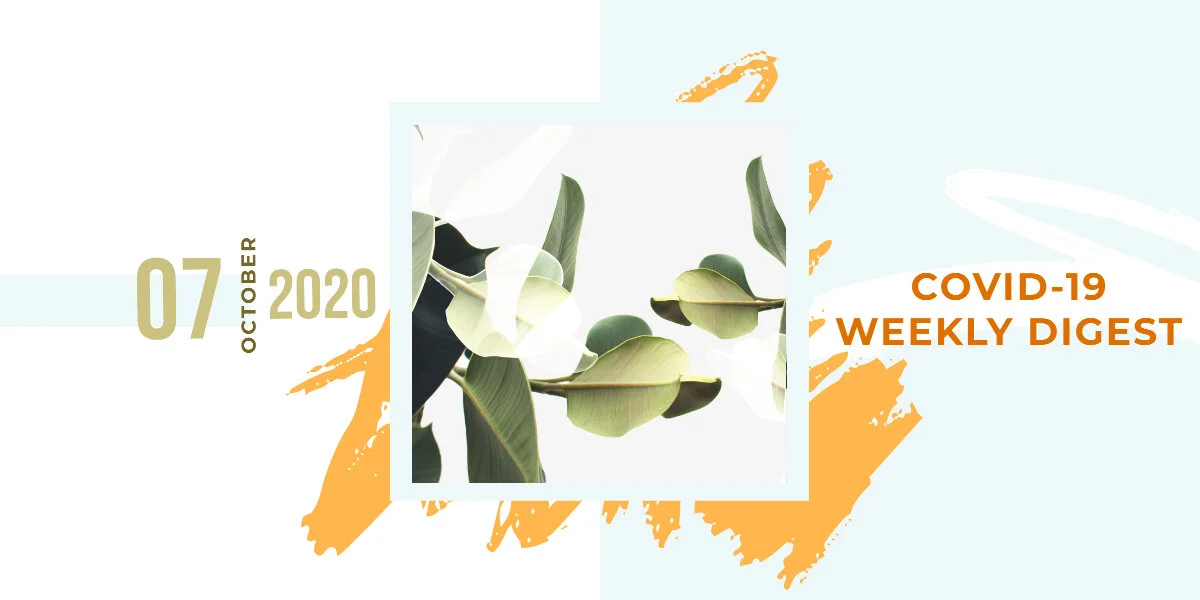COVID-19 Weekly Digest (October 07, 2020)
Fall is here, and with it, the beautiful colors of the season. Hikes and drives to see the fall colors are still something we can do, despite COVID-19, as this guide in the New York Times reminds us, with pictures and suggestions across the country. The Berkshires in Massachusetts, Ohio’s Cuyahoga Valley National Park, West Virginia’s Spruce Knob, Maine’s Grafton Notch, Percy Warner Park as well as Radnor Lake near Nashville, and Guanella Pass near Denver are all perfect destinations to seek a bit of beauty and quiet. If a drive or hike isn’t possible, try these six natural remedies for stress.
CARES ACT UPDATE
Since President Trump announced on Tuesday that he was halting all stimulus talks until after the election, there has been a great deal of shock and dismay rippling throughout the country. This means if anyone was hoping for a stimulus check to save the day or perhaps more small business loan help, they are most likely out of luck until after November 3rd.
While the Federal Reserve Chairman was calling for more money to be pumped into the economy, President Trump decided that instead he would double down and attempt to call the Democrats’ bluff. Let’s hope that this was a negotiation ploy and talks will resume soon, for everyone’s sake.
Paycheck Protection Program (PPP)
According to emails received by the New York Post, the SBA expects to begin processing PPP loan forgiveness applications this week. Nearly two months have passed since the SBA began accepting applications on August 10, but to date, none of the 96,000 requests had been processed. All loans over $2 million will be audited.
Business advocates and banking industry representatives complain that the process is too complex, even with a simplified form for smaller loans. Negotiations between Treasury and Congress are underway for a possible blanket forgiveness process for loans under $150,000.
WORKING FROM HOME
As weeks of enduring the pandemic stretched into months, with no end yet in sight,
organizations are finding that their over-stressed employees will need additional support to see them through the next six months. An individualized approach is needed to prevent burnout. Taking time off and completely unplugging for a week or two is revitalizing, but simply listening to team members and acknowledging those who have taken on additional work also helps.
Keeping the team moving forward also means they may need help with boosting morale. Focusing on small improvements and celebrating even small wins combined with helping to keep everyone’s emotional gas tank full can help keep team morale high. Fostering employee resilience can also reduce burnout and enhance innovation as well as improve the bottom line.
Some office workers are taking advantage of forced remote work to experiment with being digital nomads. Reading reviews of accommodations beforehand reduces surprises when the internet and wi-fi are not as reliable as advertised. Being transparent with clients and employers about locations is essential, according to veterans. Time zone differences may mean rising early or working late to accommodate clients.
Research has demonstrated a connection between clothing and performance at work: people who dress in professional clothing tend to perform better than those who don’t. However, evidence from the assertively casual dress of Silicon Valley leaders such as Mark Zuckerberg supports the claim that it is a person’s confidence that matters, not the outfit they wear. Some people are equally confident whether they are wearing formal wear or a hoodie and shorts. Many professionals are choosing the kinds of outfits they used to wear when coming into the office on weekends—maybe nicer pants and a professional-looking shirt.
LIVING WITH AND AFTER THE PANDEMIC
Work in the post-pandemic world
Even before the pandemic, annual performance reviews were beginning to transform from a one-size-fits-most method to a more frequent and individualized approach. For many companies, the COVID-19 pandemic accelerated that shift. This article in Fast Company presents the thinking of leaders of companies such as Intel, Udemy, and Keystone Partners on the past, present, and future of performance reviews. For some leaders, the key metric of performance has shifted from hours at work to deliverables because the hours a person works in a remote work environment can no longer be reliably measured. Others are concerned with a possible loss of innovation when informal interactions become more difficult in a remote workforce.
New research from Lean In and McKinsey indicates that women’s modest gains in workplace equity over the last six years may be completely undone in one year. About one in four women in their latest survey reported that they were considering downshifting their career or leaving the workforce altogether due to fallout from the pandemic. Many working mothers with children are experiencing higher levels of burnout, due to additional childcare and homeschooling responsibilities. While companies with more women in leadership positions tend to perform better, the pandemic may result in the long-term departure of millions of women from those positions.
Back to school
While the media’s attention has focused on colleges and universities that have had uncontrolled COVID-19 outbreaks, there have been success stories. Small colleges in rural communities as well as larger universities such as Duke University with 17,000 students have been successful in allowing students to return to a nearly normal school year. Their secret? “Fast, widespread, and frequent testing of people with and without symptoms is the best way to pinpoint and stop potential outbreaks.” Testing students twice a week helps to identify infected students while they are still asymptomatic but capable of spreading the virus to others.


